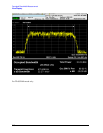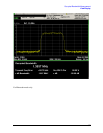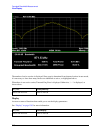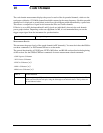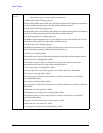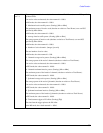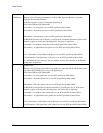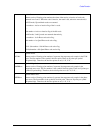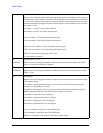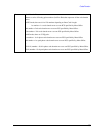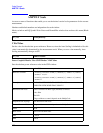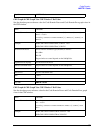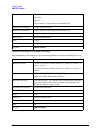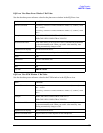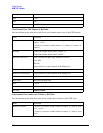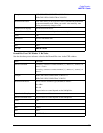
654
Code Domain
8 Corrected Measured Trace:
Returns series of floating point numbers that alternately represent I and Q pairs of the corrected
measured trace of the selected code channel.The magnitude of each I and Q pair is normalized
to 1.0. The first number is the in-phase(I) sample of symbol 1 decision point and the second is
the quadrature-phase(Q) sample of symbol 1 decision point. As in the EVM, there are X points
per symbol, so that:
1st number = I of the 1st symbol decision point
2nd number = Q of the 1st symbol decision point
…
(2×X)+1 number = I of the 2nd symbol decision point
(2×X)+2 number = Q of the 2nd symbol decision point
…
(2×X) ×(N–1)+1 number = I of the Nth symbol decision point
(2×X) ×(N–1)+2 number = Q of the Nth symbol decision point
Where X = the number of points per symbol, and
N = the number of symbols.
9
<SPOWer>
Symbol Power vs. Time:
Returns series of floating point number (in dBm) that represent the trace data of the symbol
power vs. time of the selected code channel.
10
<CPOWer>
Chip Power vs. Time:
Returns series of floating point numbers (in dBm) that represent the entire trace data of Chip
Chip vs. Time.
11 Demod Bits:
Returns series of floating point numbers of symbol values for the selected code channel for the
entire capture length.
If a channel’s spreading has been done on only I or Q branch, queried data represents the
sequence of corresponding I or Q data.
If a channel’s spreading has been done on both I and Q branch and its modulation scheme is
QPSK, queried data represents alternating I and Q sequences as follows:
1st number = in-phase bit of the 1st I/Q pair
2nd number = quad-phase bit of the 1st I/Q pair
3rd number = in-phase bit of the 2nd I/Q pair
4th number = quad-phase bit of the 2nd I/Q pair
……
(2×N–1) th number = in-phase bit of the Nth I/Q pair
(2×N) th number = quad-phase bit of the Nth I/Q pair
where N is the number of the symbols in the entire capture length.



